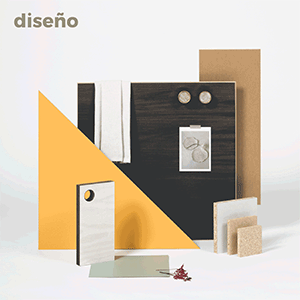How can our homes adapt to their new uses? What will nursing homes be like in the future? Will working from home see the end of office spaces? The best people to answer these questions and others related to the effect of the coronavirus crisis on architecture are architects themselves. Online meetings in April and May organised by Finsa and the Tectónica platform brought together representatives from some of the biggest architecture studios in Spain, and below are the reflections that came out of these meetings.
Flexible homes and spaces that can be adapted
The imagination of those who have adapted their spaces to lockdown conditions has been admired by Anna and Eugeni Bach as well as Íñigo García Odiaga from VAUMM, who participated in the first discussion which focused on the home. Íñigo García Odiago proposed that “architecture should launch a research project and map out all the resources that have been developed by people in neighbourhoods, [with the aim of] including them in a list of solutions for the future that architects can use.”
https://www.instagram.com/p/B-AeWXdo9j0/?utm_source=ig_web_copy_link
Architecture must respond by making spaces more flexible, Eugeni Bach said, something that this situation has put to the test. For example, forgetting about rigid definitions of spaces so that they can transform into mutable spaces which have many uses depending on specific needs, including leisure, work, and sport. Let’s not limit ourselves by using labels. The kitchen doesn’t just have to be a space for cooking – it can also be a games room for the children or a workspace for the remote worker. “Not giving spaces a specialised use will always provide more flexibility,” said Anna Bach.
Eugeni predicted the crisis of the loft model, which offers a lot of space but without the ability to subdivide it into different areas when a home needs to transform itself into different things, like an office, gym, or school. Íñigo García proposed giving inhabitants a home which is like a “blank slate” with the right dimensions and multiuse furniture so that they can modify it according to their needs.
https://www.instagram.com/p/B_vALVRqZIJ/?utm_source=ig_web_copy_link
Real and virtual windows
Given that the spread of tuberculosis led to the widening of windows to facilitate ventilation in homes, Íñigo García does not rule out modifications to our homes for hygiene reasons. However, all agreed that finding a solution to the deficiencies that this intense use of our homes has brought to light was already a common issue for architecture impeded by developers. These include correct ventilation and light, outdoor spaces, and flexible rooms.
One manifestation of the changes to the way we see our homes is how we now place value on having balconies and terraces, which have become another room in the house which, as Anna Bach explained, we have started to use for things we would usually do inside. Another is the “virtual windows” into other houses due to our screens being our contact with the outside world, which has revealed the need to have silent and isolated spaces in the home.
https://www.instagram.com/p/B-CN49yJkO1/?utm_source=ig_web_copy_link
Nuevos modelos para comunidades de mayores
New models for communities for the elderly
Some of the places that has been most affected by the pandemic in Europe have been nursing homes, a topic covered in the second discussion, in which Óscar Miguel Ares participated alongside Juan Manuel Nicás from Padilla Nicás. This field of architecture is working to offer different models that adapt to different types of elderly people, such as assisted-living apartments, co-housing, or renovated homes.
Both agreed on the importance of keeping the elderly in their usual surroundings and are developing projects along these lines. Padilla Nicás is doing so by renovating homes, such as the renovation that a client gifted to their parents so that they could stay in their own home for the rest of their lives. Óscar Miguel Ares is going one step further by transforming an old neighbourhood into a community for the elderly in which both the flats as well as the urban surroundings have been adapted to their needs. Technological advances, such as remote assistance and automated control systems, can also be helpful in this approach.
https://www.instagram.com/p/B22IAnNCKml/?utm_source=ig_web_copy_link
Nursing homes will still be necessary, but Óscar Miguel Ares emphasised the therapeutic function of architecture and the need to transmit the feeling of being at home in these facilities. Juanma Nicás believes that they should make the effort to move away from a hospital-like aesthetic and adopt a more human feel, with more spacious and light-filled rooms that residents can fill with their own furniture.
While Nicás trusts that this crisis will end the overcrowding in huge nursing homes that house up to 300 people, Ares believes that it will be demographic evolution itself, with the percentage of elderly people in the population continuously increasing, that will bring changes.
https://www.instagram.com/p/B_meQBJJoy8/?utm_source=ig_web_copy_link
The end of offices?
Lockdown has become a “gigantic universal experiment” according to Tectónica’s director José María Marzo, who acted as the moderator of the third debate which looked at workspaces in which Fermín Vázquez from b720 and Carlos Arroyo participated. When offices all over the world emptied out, employees took their work home. Some homes are going to have to take this into account so that work doesn’t start to invade privacy.
The need to work remotely has made us realise that, in a lot of situations, we can live without an office. Does this spell the end for these spaces? Fermín Vázquez strongly believes that we aren’t going to give up working together because of the human need to interact, although we will learn to combine working in an office with working remotely. For example, we will avoid unnecessary travel to meetings that can be carried out using videoconferencing.
https://www.instagram.com/p/B_xF0QdJFxp/?utm_source=ig_web_copy_link
Nevertheless, current office buildings, which have large open spaces but in which workstations are fit into a few square metres, will need to change. Fermín Vázquez is hoping that this situation won’t result in further isolation with temporary solutions like screens and partitions, but rather in more open spaces.
Carlos Arroyo supports the idea of flexible spaces which include options to work in different ways, such as desks, meeting areas, and areas set aside for concentration. These are spaces which are free of hierarchies, individual offices, and fixed workspaces. It’s a space that adapts to the occupant, not the other way around. Fermín Vázquez also proposed the creation of multi-use buildings on a smaller scale that ones we see today.
https://www.instagram.com/p/BtTutnqhs7J/?utm_source=ig_web_copy_link
Just like in our homes, new needs in workplaces will involve hygiene measures that should form a part of regulations. Carlos Arroyo gave the example of the growing concern with air quality in workplaces, a complaint linked to “sick building” syndrome and which is sure to receive more attention.
If you want to know more, you can see the discussions in their entirety on Finsa’s YouTube channel



